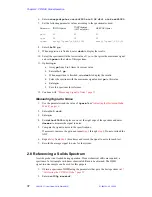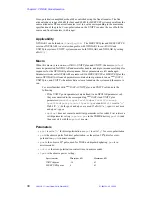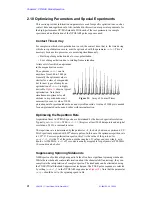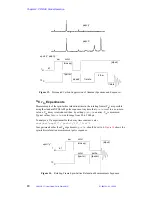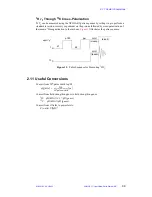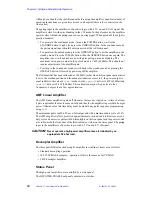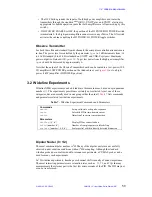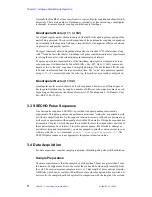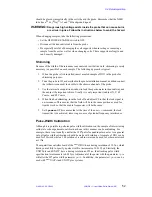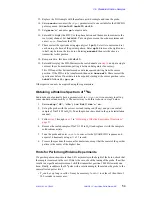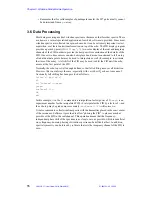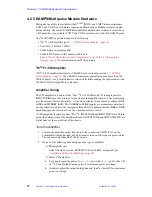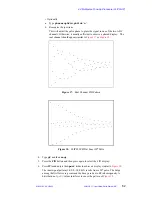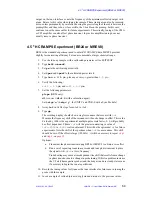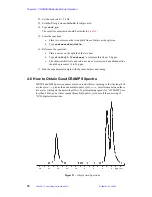
3.2 Wideline Experiments
01-999162-00 C0402
VNMR 6.1C User Guide: Solid-State NMR
50
• The OFF button grounds the inputs of both high power amplifiers and routes the
transmitters through the standard
UNITY
INOVA, UNITYplus, and UNITY electronics
appropriate for liquids operation (note that both amplifiers are left powered up by this
switch).
• If HI POWER ENABLE is OFF, the position of the HI POWER/LO POWER switch
is immaterial—the high-power amplifiers cannot receive any rf drive. The ON switch
activates the cabinet, enabling the HI POWER/LO POWER toggle switches.
Observe Transmitter
For both the solids and standard liquids channels, the computer-controlled attenuators are
in-line. The power level is controlled by the parameter
tpwr
in 1 dB increments from –16
to 63 dB standard (0 to 63 dB is standard on UNITY and VXR-S systems). Maximum
power output is obtained with
tpwr=63
. To get low power from the high-power amplifier,
tpwr
should be decreased by approximately 6.
Note that the output of the Observe Transmitter board can be routed to a low-power (300
W) amplifier (LOW POWER position on the third cabinet, see
) or to a high-
power (1 kW) amplifier (HI POWER position).
3.2 Wideline Experiments
Wideline NMR experiments can be divided into three main areas, based on spin quantum
number (
I
). The experiments possible are certainly not restricted to just one of these
categories, but are normally used in one group rather than in all.
lists commands
and parameters related to wideline experiments.
Dipolar Nuclei (I = 1/2)
The most common dipolar nucleus is
1
H. Many of the dipolar nuclei are not usefully
observed under wideline conditions without
1
H decoupling. Although the standard
wideline probe does not allow double-resonance experiments, a CP/MAS probe can be
used for many such experiments.
In
1
H wideline experiments, lineshape or chemical shift is usually of minor importance.
The most interesting parameters are relaxation rates such as
T
1
,
T
2
, and
T
1
ρ
. In many
measurements the relevant part is the first few microseconds of the FID. The FID may not
even be transformed.
Table 7. Wideline Experiment Commands and Parameters
Commands
ssecho
Set up solid-state echo pulse sequence
tmove
Left-shift FID to time-domain cursor
tshift
Adjust tau2 to current cursor position
Parameters
dotflag
{'y', 'n'}
Display FID as connected dots
lsfid
{number, 'n'}
Number of complex points to left-shift np
scalesw
{number > 0.0, 'n'}
Scale spectral width in directly detected dimension


